Genre: Sports Developer: Iguana Ent. Publisher: Acclaim Players: 1-2 Released: 1996
When NBA Jam hit the scene in 1993, arcades went crazy for this interesting new take on the game of basketball. It became such a success that offering the game to the home consumer became an immediate priority for both SEGA and Nintendo. The same went for its sequel, NBA Jam: Tournament Edition, the following year. With both games setting the video game market ablaze, another iteration seemed inevitable; after all, it just made financial sense. Now, Acclaim could easily have commissioned series developer Iguana to slap together a slightly tweaked NBA Jam 3 but give the company credit. In creating College Slam, it refused to take the easy way out. This is not to say that the game set the world on fire with myriad new features, but it was a calculated attempt at breaking new ground while retaining the core concepts of the NBA Jam series.
New to College Slam, the ability to choose from forty-four Division I NCAA schools (it is ironic to note the omission of Mississippi State University, a team that reached the Final Four in the year the game was released). Each team features “anonymous” players (standard procedure for collegiate games featuring amateur athletes) corresponding with the actual team members from their 1996 squads (right down to skills, heights, and attributes). Also new to the series (perhaps to make up for the absence of big-name athletes): the player editor. Now, you can design a character based on yourself and fulfill that dream of cutting down the nets at the Final Four with your favorite school. An added bonus of the player editor, and one that often goes unnoticed, is the replay value that it adds. If you so choose, College Slam allows you to annually update a college so that it will reflect, at least in name, each year’s roster.
But you probably did not buy College Slam to add a loosely based version of yourself to a college roster. Chances are you purchased the game for one reason: no holds barred basketball. But is this game simply a repackaged NBA Jam with a college facade? Or did it by-pass the “if it ain’t broke, don’t fix it” mentality to create a fresh new game of arcade basketball? It turns out that the answer lies somewhere in between.
The controls of College Slam do not provide any changes to the game in terms of how it handles compared to the first two NBA Jam titles. You are given the ability to program which buttons you would like to shoot with (also functions as the jump button when you are not handling the ball), pass with (the steal/foul button when on defense), and set as turbo (which once again drains your energy meter, except when you are on fire). The music in College Slam, while vastly different than NBA Jam, keeps the same principle: make it catchy, yet simple. For instance, instead of an inescapable bass (as featured in Jam), a generic college fight song is played at each menu.
Putting these aspects of College Slam aside, let’s examine what really makes or breaks a sports title: gameplay. As per usual, you will be asked to select two players (this time, from a pool of five) to match up against a duo from another school. As expected, the game features the same rules (or lack thereof: goaltending and the shot clock violation are the only penalties that are enforced). The game also features the usual array of high-flying dunks and turbo-charged fast breaks, as well as the token bombastic play-by-play man. Most importantly, though, College Slam also retains one of NBA Jam’s most famous features (aside from the cheap shot fouls, which are a given). Do the words “he’s on fire” mean anything to you?
Indeed, much like NBA Jam, going on a run in which you are able to score three baskets, all while preventing your opponent from notching a field goal, grants you that virtually unstoppable ability of being on fire! Not only is it nearly impossible to miss a shot, but this ability also grants you unlimited turbo. As before, the three shots do not necessarily need to be consecutive (missed attempts do not hinder you, only the makes of opponents). Also, you cannot tag-team your way to this special power: while it is technically possible for both players on the floor to achieve “on fire” status, each must hit his own three shots. And if one player is already on fire, it would be very unwise to put his powers on the back burner in order to bolster his teammate’s abilities (unless you do so to fulfill any inquisitive needs that you may have).
Now, at this point, you might be asking what exactly are the new features that College Slam purportedly brings to the table? Well, that would be a gameplay enhancement not seen in the NBA Jam series: power ups. Unique to the college scene are five special abilities that add a new dimension of fun to the arcade basketball game. They are as follows: a tornado power-up, which turns your player into a windy whirling dervish that physically wreaks havoc on the opposing players; the self-explanatory invisibility enhancement; a lightning strike that will prevent your opponent from making even the easiest of shots; a reverse power-up, which sends the ball to the far side of the basketball court; and, finally, a chaotic feature that sends the ball into a random bouncing frenzy. These power-ups alone inject a much-needed dose of freshness into the increasingly stale NBA Jam formula.
Unfortunately, even when considering the gameplay additions, in what appears to be a recurring theme with College Slam, the graphics do not possess a whole lot that we have not seen before. Sure, you might enjoy playing in your favorite school’s colors, but aside from the uniforms and courts, it is almost as if you are paying for an NBA Jam mod. Almost. The aforementioned power ups do more than just provide a much needed boost in the gameplay department. They also make the game more aesthetically pleasing (just wait until you set eyes on the tornado power-up). This is not to say that the power-ups prevent College Slam from looking a bit old and tired. But they do augment the other minor touch ups in a way that validates the time and money you have put into the game.
Besides, some things just have a hard time becoming old hat. I do not care how many iterations of NBA Jam there are, I still get excited on every fast break, because of what could happen. What kind of dunk am I about to see? Will I shatter the backboard? Will the announcer go into a frenzy? Okay, so maybe we know the answer to that last question (can I get a resounding YES?).
So what if College Slam will not blow you away with jaw-dropping graphics (especially when taking its predecessors into consideration)? It still refines what you have already seen before, in a way that just barely keeps it fresh. That is not to say that College Slam 2 would have avoided being a disaster if they tried to push these graphics and gameplay on consumers one more time (although the Tournament Edition subtitle that adorns the NBA Jam sequel would be ever-so appropriate for an NCAA basketball game). But College Slam allows the spirit of the NBA Jam series to rise up for one final performance, before ultimately ending the series (at least the 16-Bit series) on a high note. And with the inexpensive nature of the sports games from the SEGA Genesis these days, College Slam is most definitely a game that you will want to add to your library. You might initially think that you are playing an NBA Jam retread, but once you spend a few minutes with it, I defy you to put the controller down.
SCORE: 9 out of 10

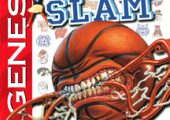
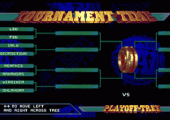
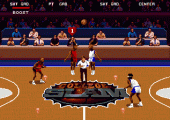
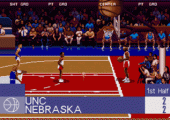
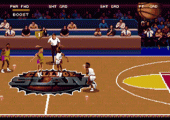
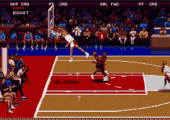
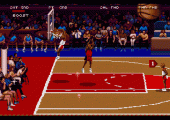
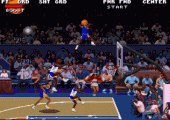
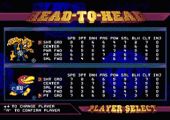
Recent Comments